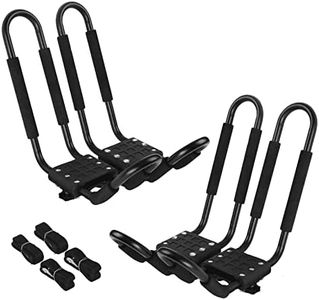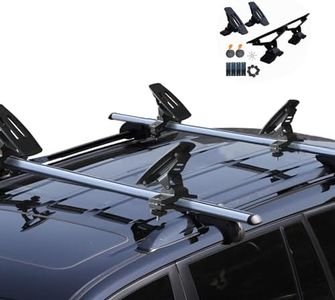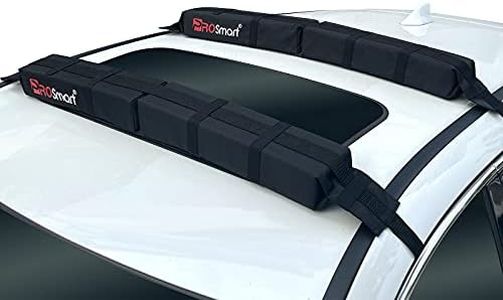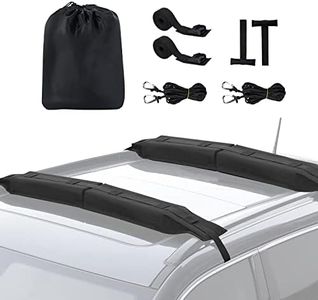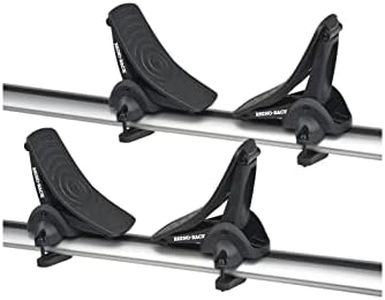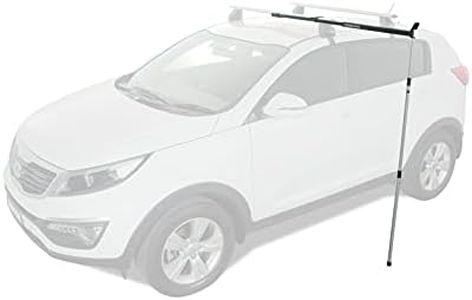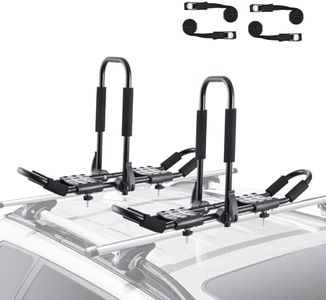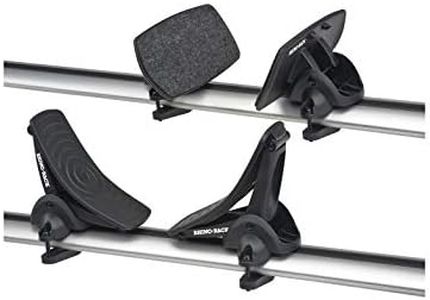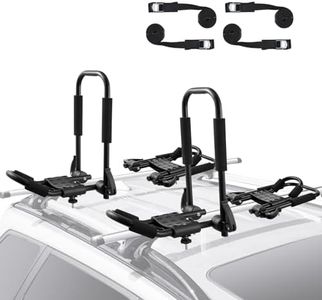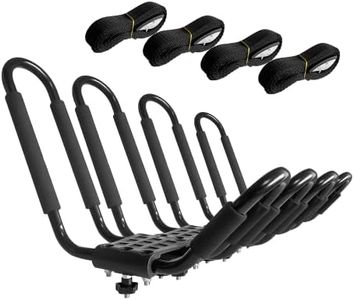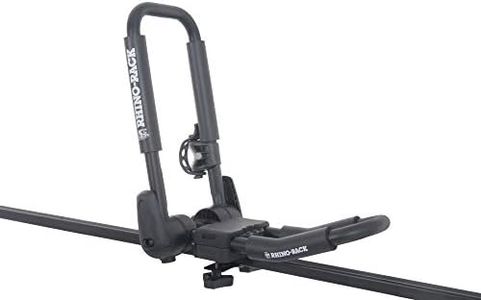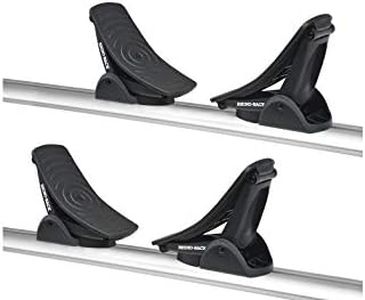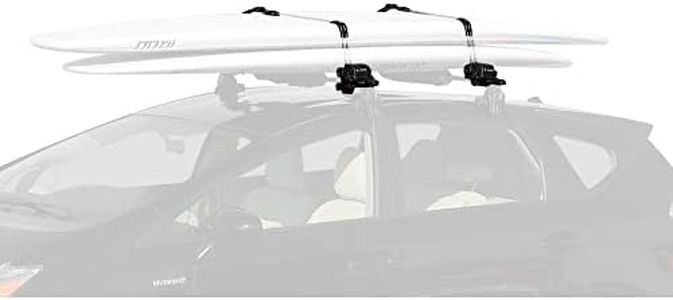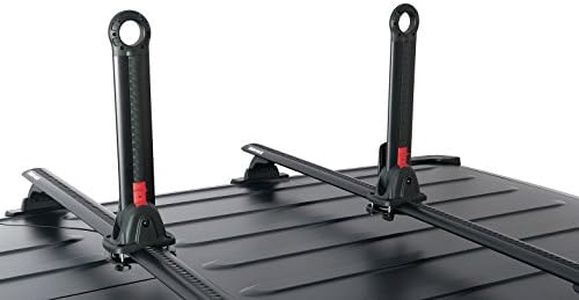We Use CookiesWe use cookies to enhance the security, performance,
functionality and for analytical and promotional activities. By continuing to browse this site you
are agreeing to our privacy policy
10 Best Kayak Roof Racks
From leading brands and best sellers available on the web.By clicking on a link to a third party's website, log data is shared with that third party.
Buying Guide for the Best Kayak Roof Racks
When choosing a kayak roof rack for your vehicle, your primary goal is to safely and securely transport your kayak without damaging your car or kayak. Before buying, consider your vehicle type, the number and size of kayaks you plan to carry, and how often you’ll be using the rack. Think about your own strength and comfort with loading and unloading too, since some racks are easier to use than others. By understanding the key specifications and what they mean for your personal needs, you’ll be able to make a confident decision.Compatibility with VehicleCompatibility refers to whether the rack will securely fit your specific vehicle’s roof type—be it bare, with side rails, crossbars, or rain gutters. This is vital, as a poor fit can lead to instability or even damage to your car or kayak. Most racks specify which roof types they work with, often dividing into universal fit (works on many cars) or custom fit (made for certain models). To choose right, check your car’s manual or inspect your roof to identify what you have, then match with the rack’s fit requirements.
Load CapacityLoad capacity tells you the maximum weight the rack can hold safely, usually measured in pounds or kilograms. This matters because exceeding the capacity can damage your car, the rack, or risk the kayak falling off. Light capacity racks (around 50-75 lbs) suit single, lighter kayaks; medium (around 100-150 lbs) fit larger or multiple kayaks; heavy capacity racks (over 150 lbs) are for big boats or several kayaks at once. Choose a rack that easily holds your kayak’s weight, possibly plus additional gear, without needing to use the maximum limit.
Mounting StyleMounting style refers to how the kayak sits on the roof, such as J-cradles, saddle mounts, stackers, or foam pads. This affects not only security but also how easy it is to load your kayak and how many kayaks you can carry. J-cradles hold the kayak at an angle, saving space and making loading easier for many, while saddles let the kayak rest flat for maximum support; stackers are great for carrying multiple boats upright. Pick the mounting style that fits your comfort with lifting, the number and size of kayaks you own, and your car’s height.
Ease of Installation and UseThis spec includes how quickly and simply you can put the rack on your car and load your kayak. Some racks require tools or lengthy setup, while others offer tool-free, fast mounting. It’s important because complicated racks can make kayaking less enjoyable or even lead to improper use. Beginner and casual users should look for racks that boast easy or quick installation, while those willing to spend more setup time for extra features might choose a more advanced system.
Security FeaturesSecurity features refer to locks and tie-down systems that keep both the rack and your kayak safe from theft or accidental shifting. The importance lies in preventing loss or damage during travel or when parked. Some racks include integrated locking mechanisms for the rack itself and the kayak, while others require separate purchases. Choose the level of security based on where you’ll be parking—more essentials for urban or unattended spots, simpler setups for rural or private areas.
Protection for Kayak and VehicleThis means the built-in features on the rack that prevent scratching or denting your kayak or your car roof, such as padding, soft coverings, and flexible cradles. It’s crucial if you want to avoid costly repairs or unsightly marks. Racks with thick or wide padding offer more protection, especially useful for delicate or expensive kayaks; simpler foam pads offer basic cushioning for lighter, less fragile boats. Think about how precious your kayak and car are to you when assessing this spec.
